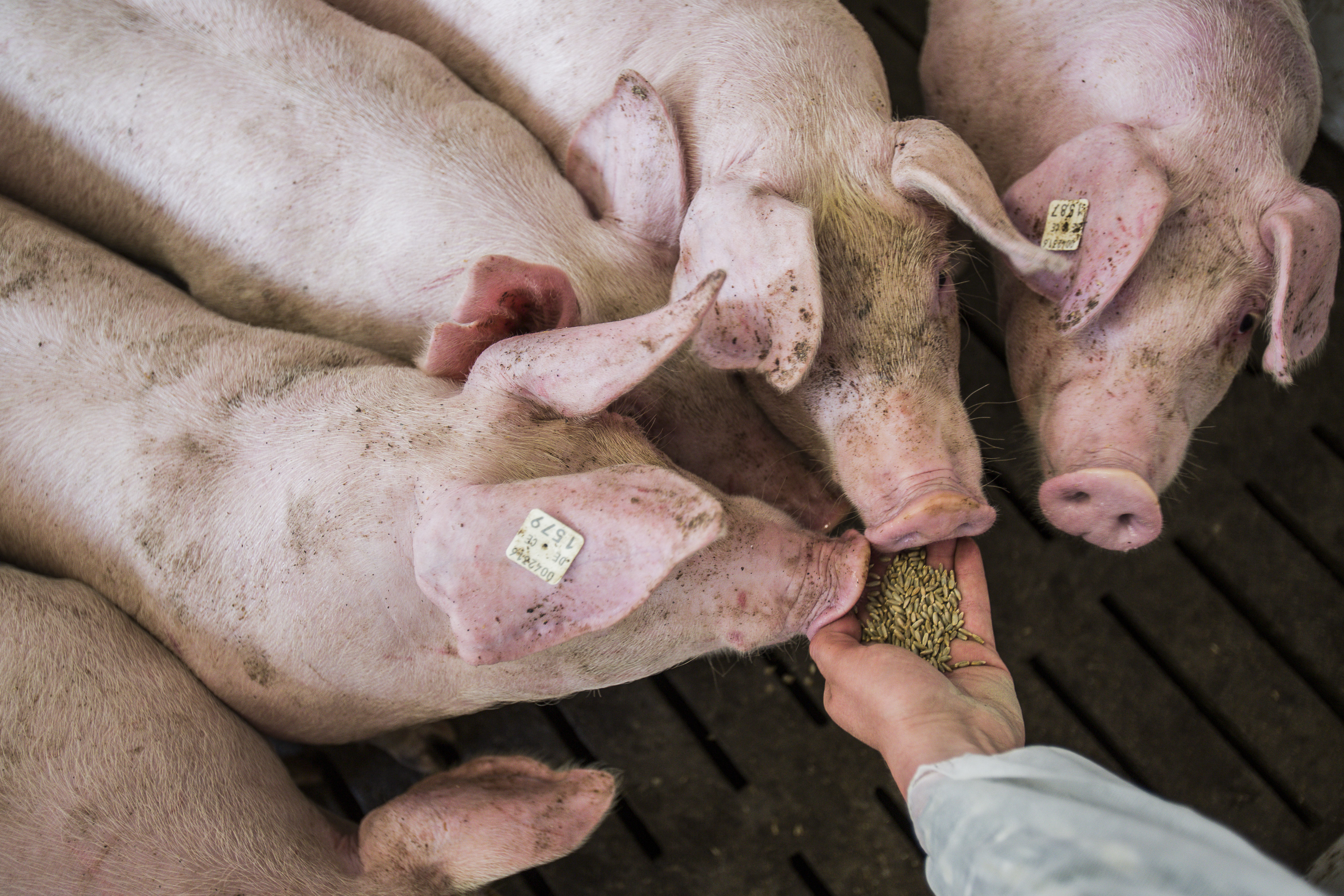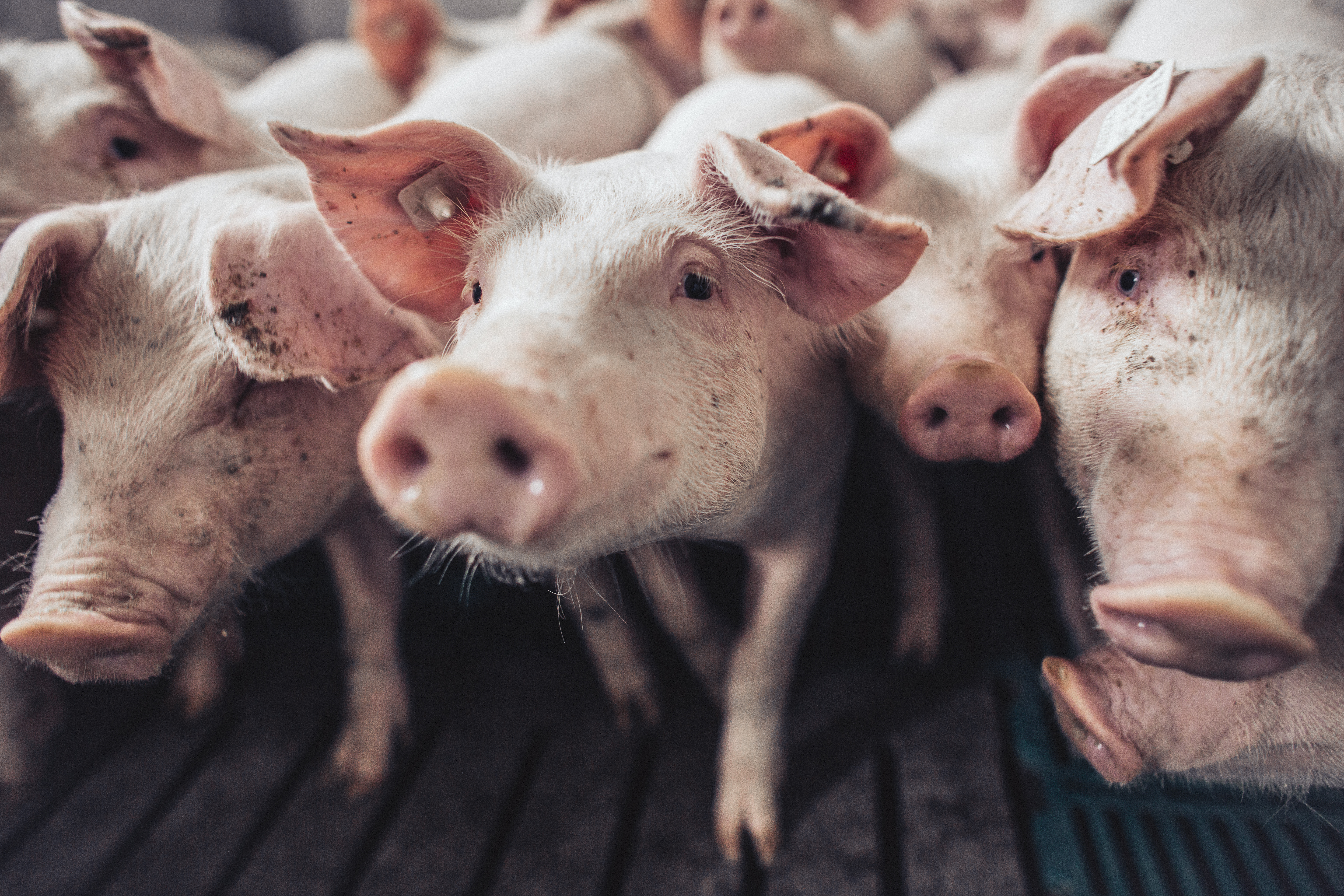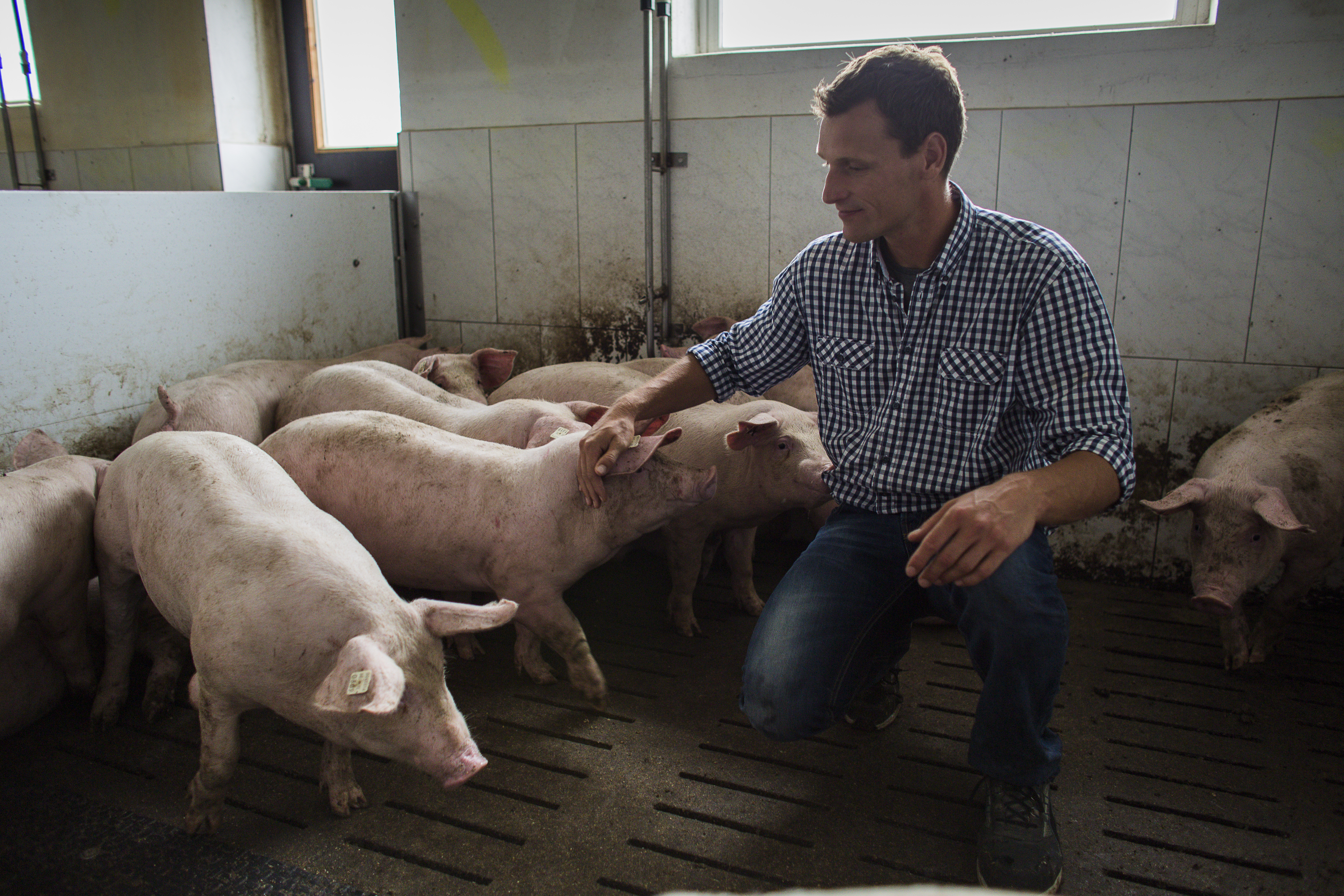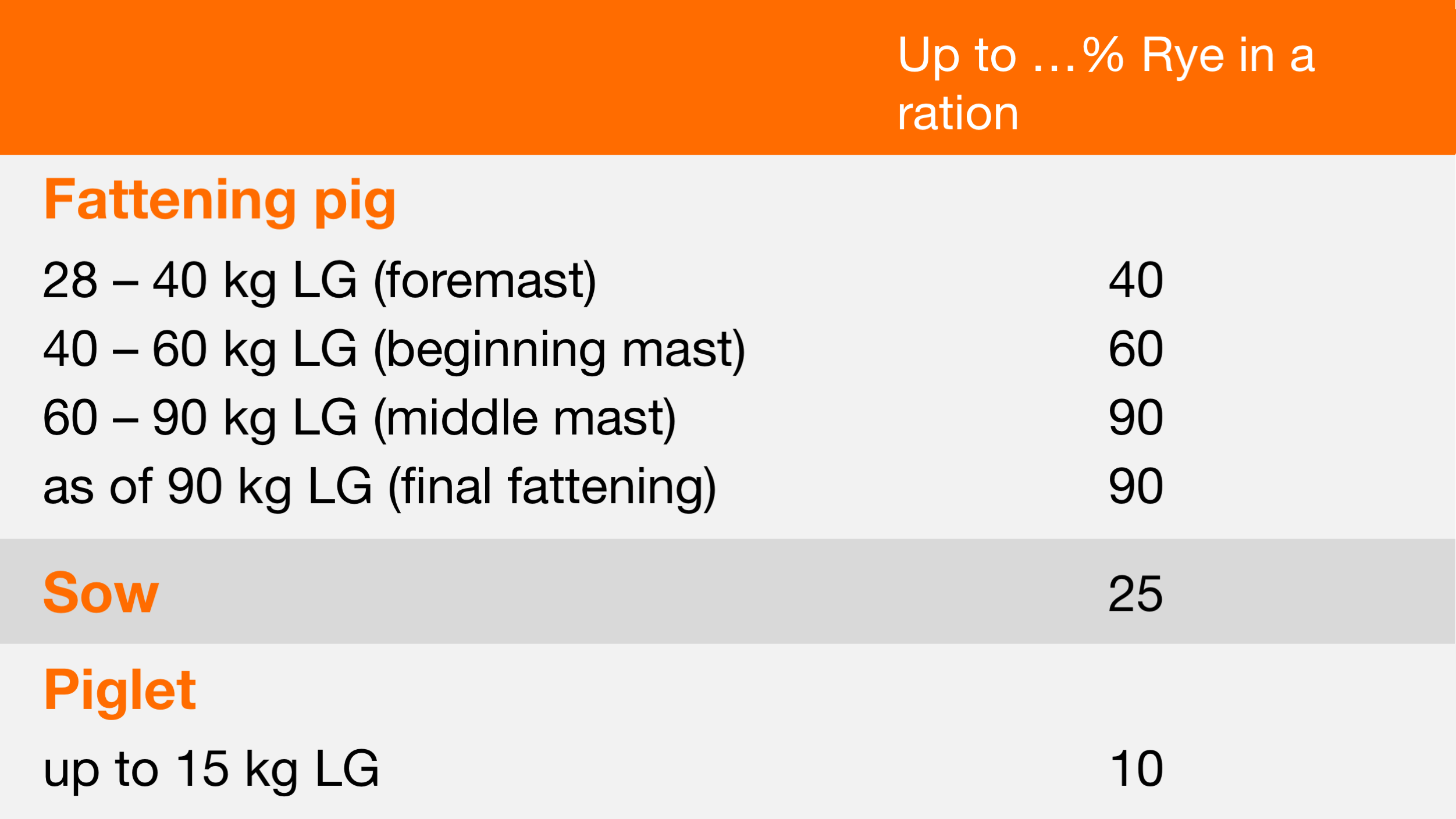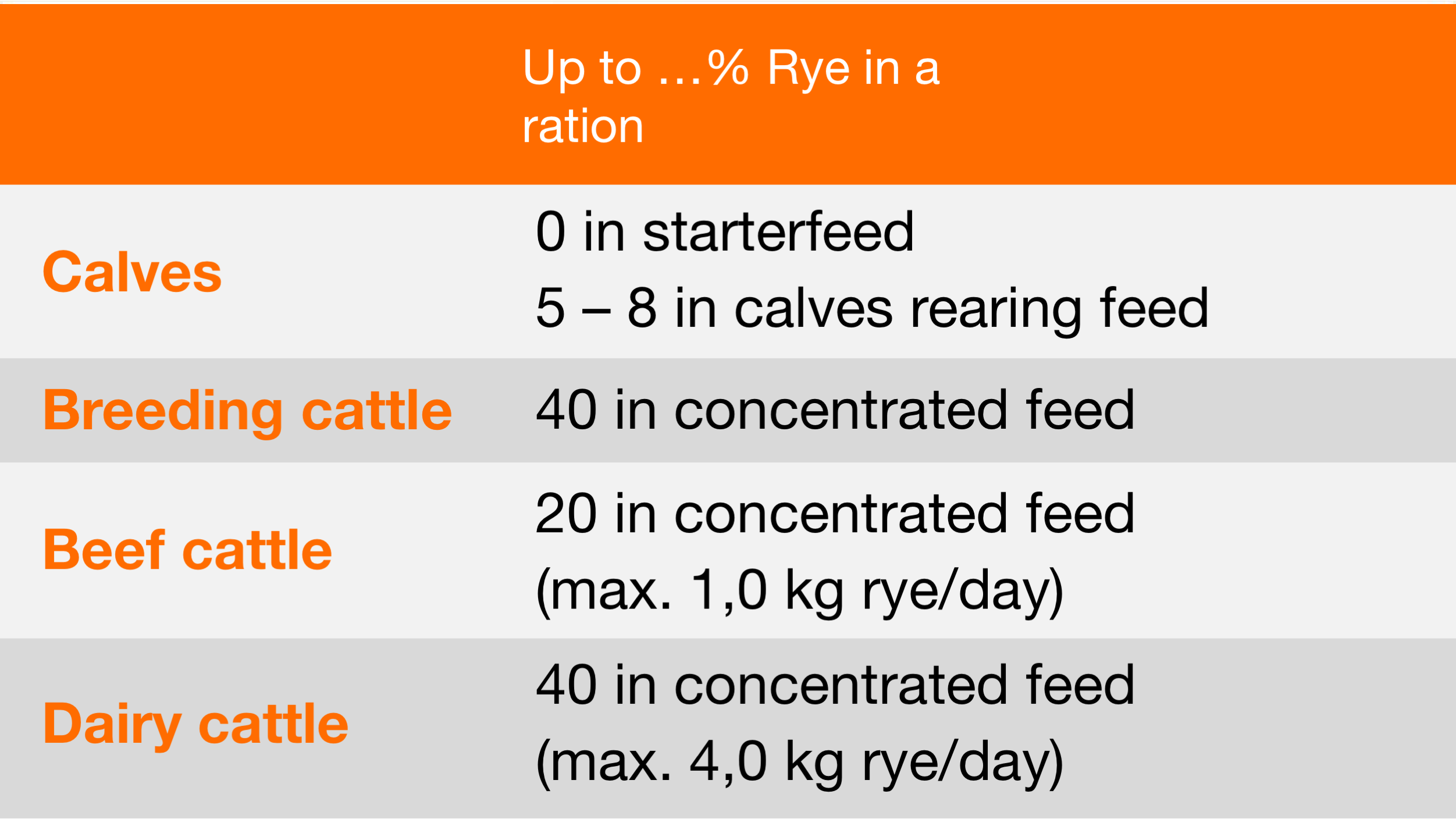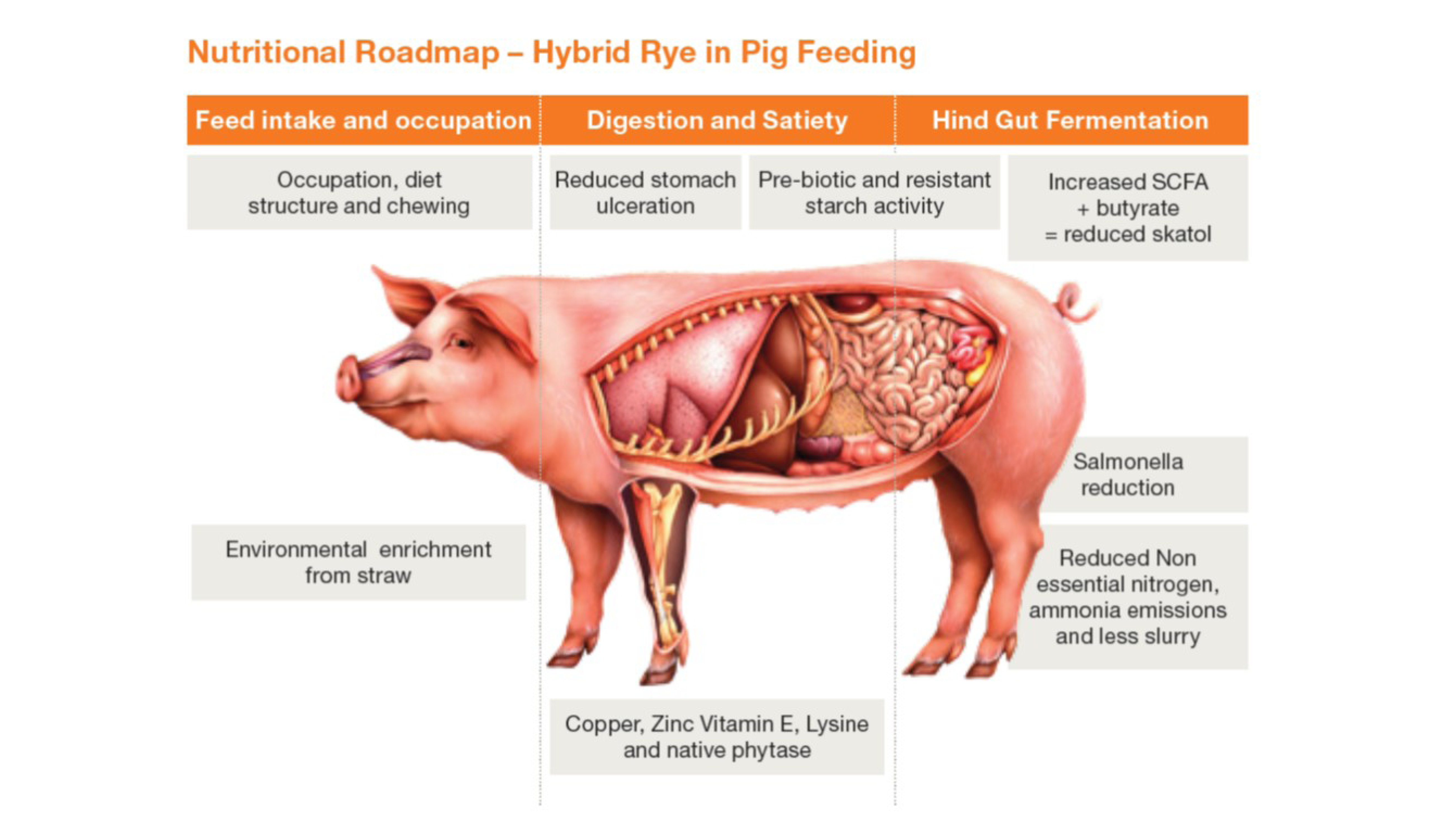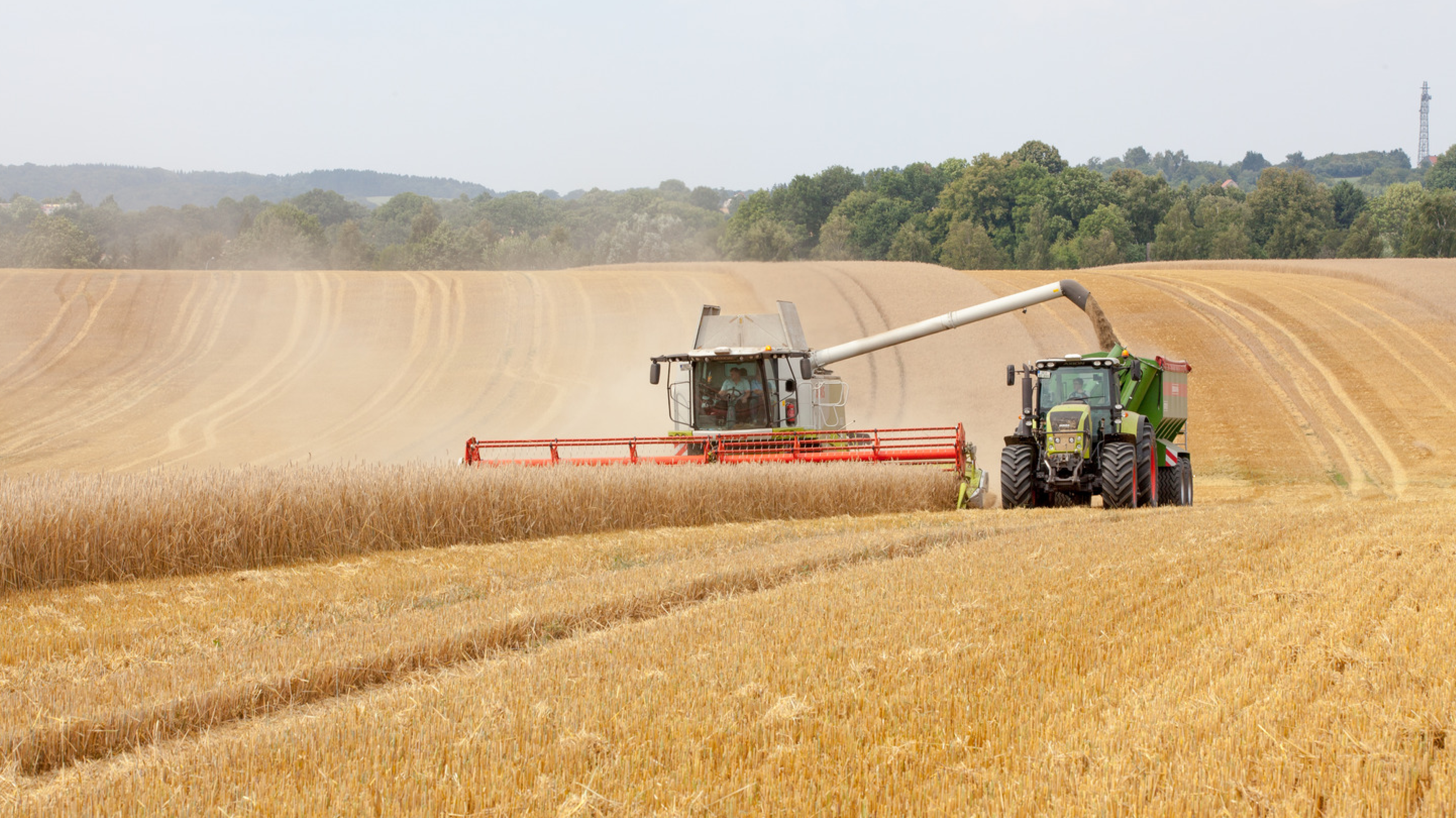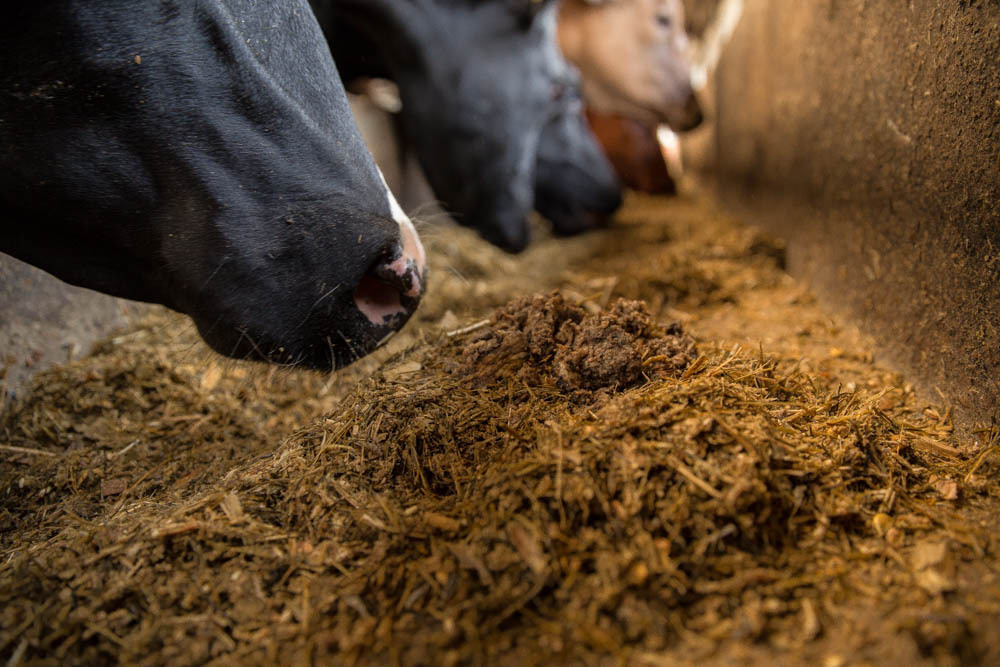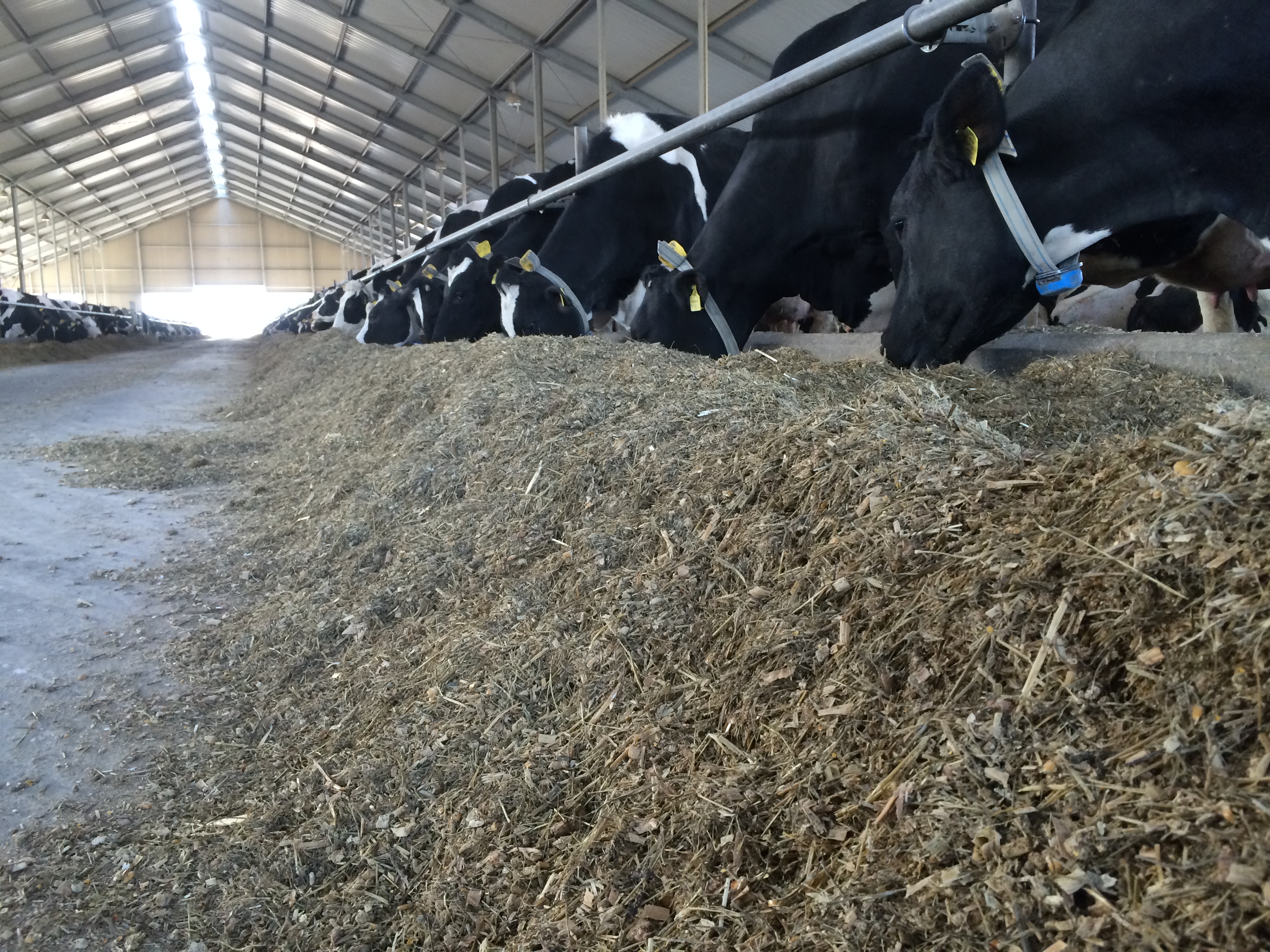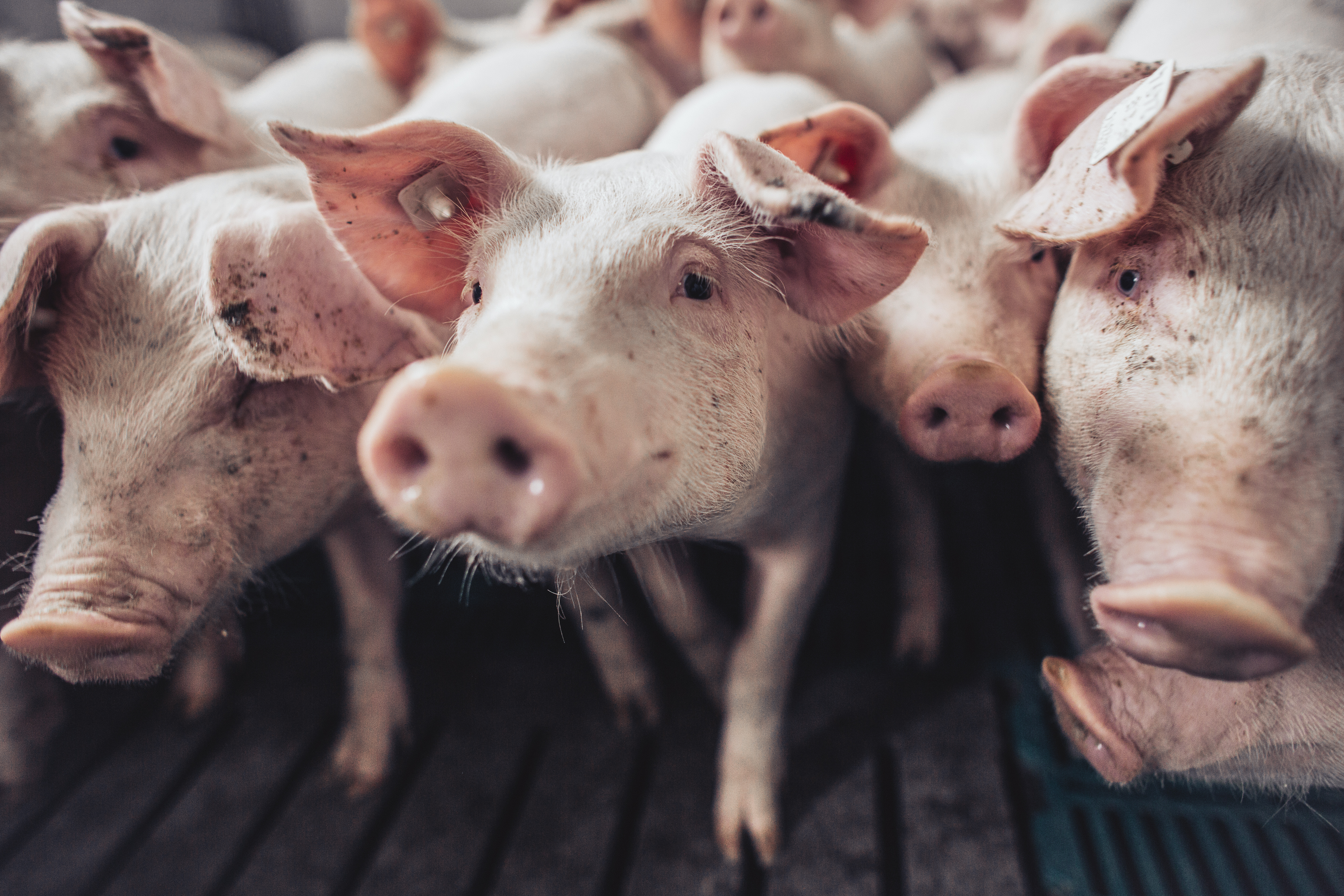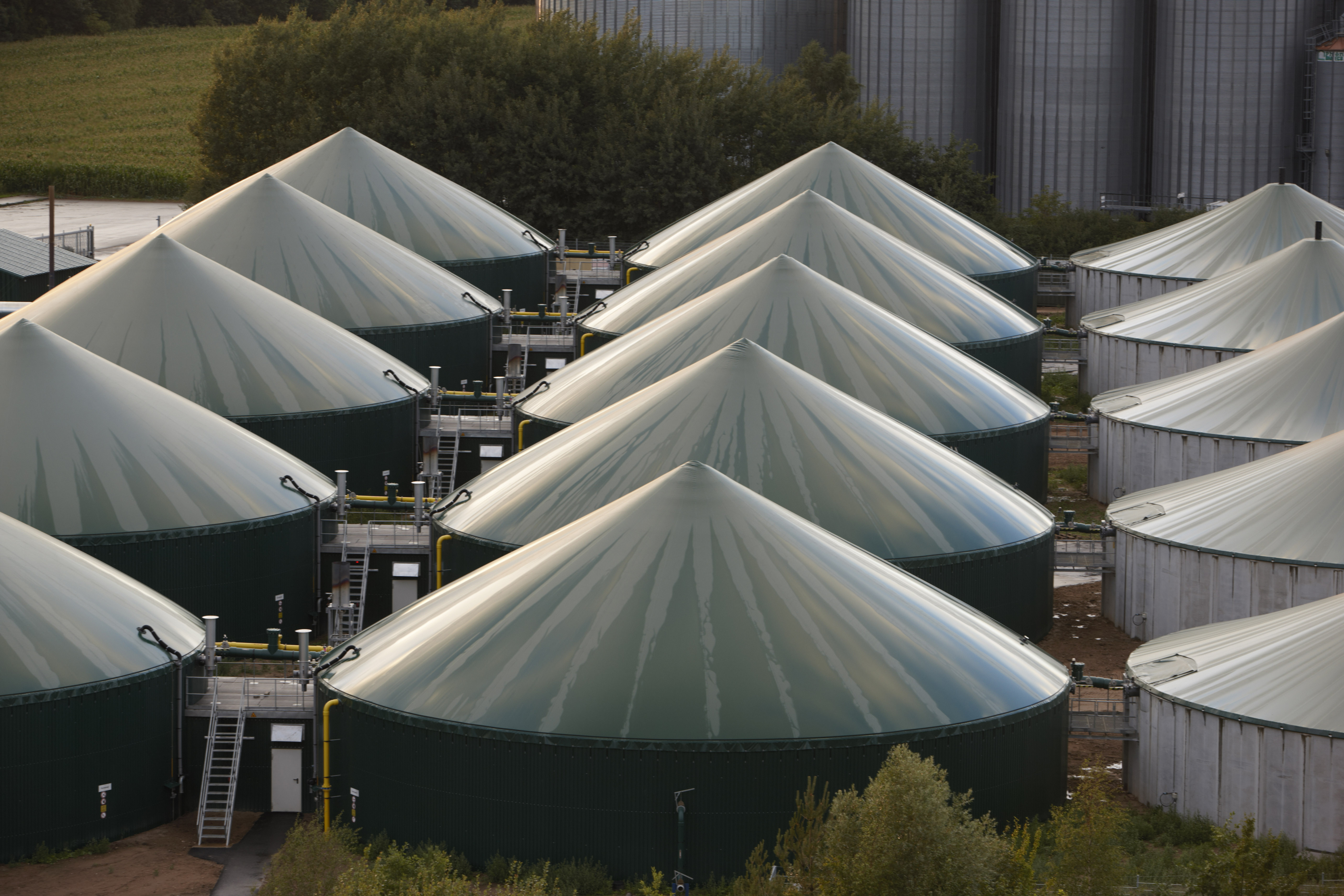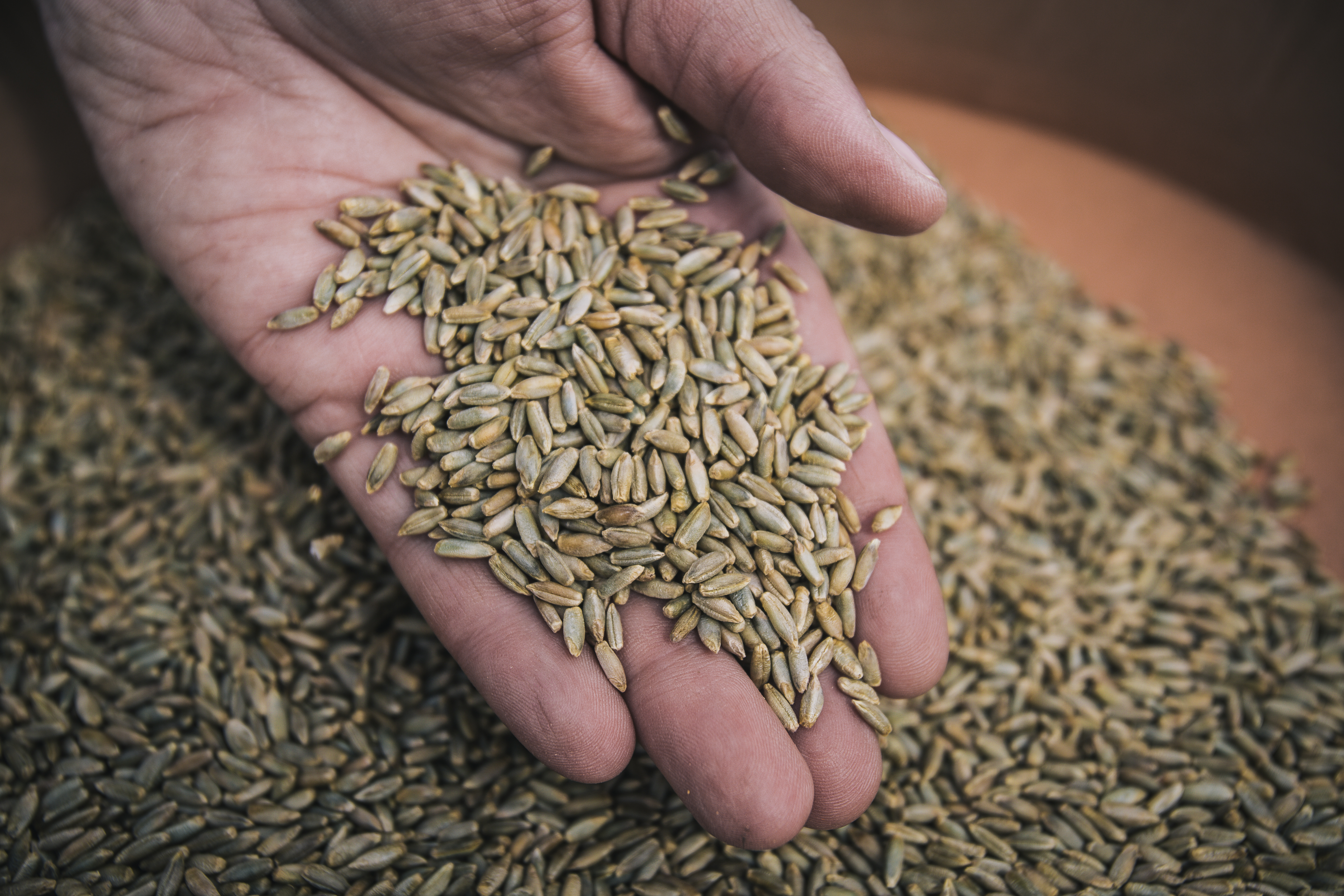Hybrid rye—a high quality feed!
What does rye offer in feeding?
- High energy content (MJ) per hectare
- High lysine content in the crude protein
- Butyrate—from rye—contributes to salmonella reduction
- Butyrate—from rye—lowers skatole-induced boar odour
- Product safety due to low Fusarium susceptibility
- Reduced ergot risk through PollenPlus technology
Crop Benefits
- Low production costs
- High nitrogen efficiency (kg N per 100 kg of grain)
- Highest yield potential of all grains
Scientifically proven: Rye, as an ideal fibrous component, has a higher fibre and fructan content than other types of grains, providing more satiety and well-being in the pig.
- The strength of rye consists of complex carbohydrate compounds
- Even and slow degradation in the small intestine to glucose
- Therefore lower and more even blood sugar levels
- Thus, longer satiety
- High digestive proportion in the large intestine (fermentation)
- Filling the colon leads to satiety and calming
- Filling the colon leads to satiety and calming
- Higher proportion of fructans and thus butyrate formation in the colon
- Conservation of the intestinal mucosa and intestinal health
- Reduction of skatole production (part of the boar odour)
- Reduction of salmonella burden
- Increase in well-being and calming
Keyadvantages for monogastric feed-pigs
Unique characteristics of rye grain
- Higher lysine:protein ratio in comparison to other cereals
- Low Glycemic Index (GI) and high satiety
- Decreased gut ulceration from a higher dietary fibre content
- High levels of occupation [chewing] and less boredom
- Increased welfare and reduced stress (nipping, bruising, mounting etc..)
Rye supports a very high fructane content
- Fructan is a structural component of all cereal grains, however rye has the highest fructane content amongst all cereal species
- Fructan is digested in monogastics via the hind gut
- is subsequently converted to butyrate
- In pigs this has the potential to limit skatol release (a contributing factor in boar taint and low consumer acceptability)
- Additionally a lower risk of salmonella (via the higher absorption of butyrate) from high fibre diets using rye
Rye inclusion recommendations (LW basis and % Rye inclusion)
- Fattening pigs: (28- 40 kg) 30% Rye, (40 – 60 kg) 40% Rye, (60 kg) + 50% Rye
- Sows: 25%Rye
- Piglets: (15 kg +)– 10 - 20% Rye
Agronomic advantages of hybrid rye
- Extreme winter hardiness and frost resistance
- Aggressive tillering capacity
- Drought tolerance – ideal for sandy soils
- Blackgrass suppression – via light reduction in the canopy
- Extends crop rotation
- Very high take-all tolerance – ideal as a second cereal
- Minimal ergot risk – via PollenPlus
Two-thirds of the German rye harvest is used for feeding—rely on proven and regional feed!
